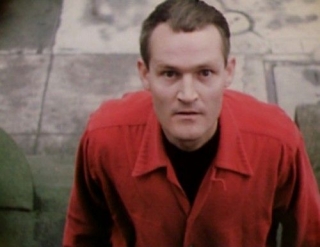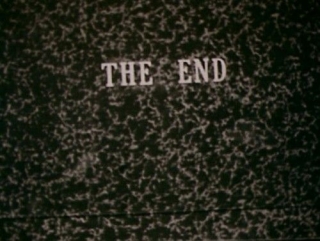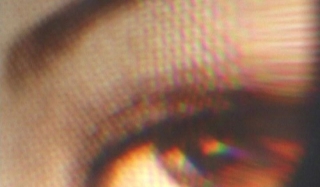Date: 30 September 2003 | Season: Christopher Maclaine
HERE ARE SOME PICTURES, WHAT IS HAPPENING? CHRISTOPHER MACLAINE & THE SAN FRANCISCO UNDERGROUND
30 September—7 October 2003
London The Other Cinema
The ‘beat generation’ were born in the depression, raised during World War II and matured in the ominous shadow of the Atomic bomb. Their spontaneous, creative reaction against the mainstream was a primitive howl for freedom. Beaten and downtrodden, beatific and elevated, rhythmic and vital like the beat of the drum.
Christopher Maclaine was active in the early hipster scene of San Francisco’s North Beach in the 1940s-1950s, one of the authentic characters at the very emergence of the beat movement. He contributed poetry and prose to small periodicals with his contemporaries Michael McClure, Robert Duncan, Kenneth Patchen and Philip Lamantia, and read at late night rap sessions in coffee bars and jazz clubs. His introduction to avant-garde world came through exposure to the important “Art in Cinema” series at San Francisco Museum of Art, and personal connections with pioneer filmmakers Jordan Belson, Stan Brakhage, Larry Jordan and Harry Smith.
He was often completely broke, unable to keep jobs, and constantly relying on the generosity of others, whose patience he tested. Maclaine was a heavy user of amphetamines, which ultimately rendered him debilitated, resulting in his internment in hospital and early death. From the late 50s he was addicted to methadrine, and in 1963 he attempted suicide, resulting in a three-month stay in the psychiatric ward of SF General Hospital. He died in 1975, having spent his last six years in a completely incapacitated state in a convalescent home.
And now, for the first time in Europe, LUX proudly present these newly restored prints of the complete films of Christopher MacLaine, including his 1953 masterpiece The End. These two screenings at The OTHER Cinema are a unique opportunity to discover a long forgotten visionary filmmaker, together with other documents and masterpieces from the San Francisco beatnik underground, including films by Kenneth Anger and Stan Brakhage.
CHRISTOPHER MACLAINE
HERE ARE SOME PICTURES, WHAT IS HAPPENING? CHRISTOPHER MACLAINE & THE SAN FRANCISCO UNDERGROUND
30 September—7 October 2003
London The Other Cinema
CHRISTOPHER MACLAINE
Poet / Writer / Filmmaker. Born 1923, Wapunucha, Oklahoma. Died 1975, San Francisco, California.
Christopher Maclaine was active in the early beatnik scene of North Beach in the 1940s and 1950s, as one of the authentic characters at the very emergence of the beat movement. He contributed to small periodicals along with his contemporaries Michael McClure, Robert Duncan, Kenneth Patchen and Philip Lamantia, and read poetry at late night rap sessions in coffee bars and jazz clubs. His introduction to the avant-garde film world came through exposure to the important “Art in Cinema” series at San Francisco Museum of Art, and personal connections with pioneer filmmakers Jordan Belson, Stan Brakhage, Larry Jordan and Harry Smith.
He was often completely broke, unable to keep jobs, and constantly relying on the generosity of others, whose patience he tested. Maclaine was a heavy user of amphetamines, which ultimately rendered him debilitated, resulting in his internment in hospital and early death. From the late 1950s he was addicted to methadrine, and in 1963 he attempted suicide, resulting in a three-month stay in the psychiatric ward of San Francisco General Hospital. He died in 1975, having spent his last six years in a completely incapacitated state in a convalescent home.
Maclaine edited four issues of the small magazine Contour (1947-49) and contributed to journals such as Neurotica, Tiger’s Eye, Beautitude, Goad and Golden Goose. He published three books of his own writing: The Automatic Wound (1948), The Crazy Bird (1951) and The Time Capsule (1960).
Maclaine made only four films, which until now have been rarely shown and are little known beyond a small circle of admirers. The films were brought into circulation in the mid-1960s by Stan Brakhage, who had encountered Maclaine in San Francisco in the 1950s. LUX has recently purchased brand new prints of the complete films of this obscure and mysterious Californian beat poet and hopes that they will now gain a new and appreciative audience.
Back to top
Date: 30 September 2003 | Season: Christopher Maclaine
THE FILMS OF CHRISTOPHER MACLAINE
Tuesday 30 September 2003, at 7pm
London The Other Cinema
Jazz, dope and rebellion – four films from the hipster subculture of San Francisco, all made by obscure and elusive poet Christopher Maclaine. His masterpiece The End (1953), salvaged in the 60s by Stan Brakhage and revered by many since, is a remarkably apocalyptic post-war saga of impending doom: the last day on earth for six of ‘our friends’ living in the shadow of the A-bomb. These new prints of Maclaine’s complete films also feature alchemical incantation (The Man Who Invented Gold), existential despondence (Beat) and highland flings (Scotch Hop).
Christopher Maclaine, The End, 1953, colour, sound, 35 min
Christopher Maclaine, Beat, 1958, colour, sound, 6 min
Christopher Maclaine, The Man Who Invented Gold, 1957, colour, sound, 14 min
Christopher Maclaine, Scotch Hop, 1959, colour, sound, 6 min
PROGRAMME NOTES
THE FILMS OF CHRISTOPHER MACLAINE
Tuesday 30 September 2003, at 7pm
London The Other Cinema
THE END
Christopher Maclaine, 1953, b/w & colour, sound, 35m
Narrated by Christopher Maclaine. Photographed by Jordan Belson.
The End is a remarkable apocalyptic post-war saga of impending doom, which follows the last day on earth for six of ‘our friends’ living in the shadow of the A-bomb. Composed of six discreet episodes, the film builds an atmosphere of doom, infused with what seems now to be dark, ironic humour. Maclaine’s virtuoso, past-tense narration is a bewildering and incoherent rant against the impending holocaust, directly addressing the viewer, who is forced to become and active participant in the story. His fractured montage works against narrative logic, a self-destructive trait that mirrors the ‘grand suicide of the human race’.
The End is partly acted, with additional observational footage. These fleeting glimpses of the world around show normal lives continuing oblivious to the nuclear threat. Disjointed cutting, subverted narratives and cryptic camerawork fuse banality with purpose. This is a truly poetic use of cinema in the way it is able to transmit unspoken thoughts through an apparently random successions of images.
Dating from 1953, this may in fact be the first genuine ‘beat’ film, profoundly inventive and advanced for its time. Maclaine’s outlook is bleak and his techniques are crude, creating a film which is deliciously inept, but glorious. One of cinema’s starkest evocations of the Cold War period and its effect on creative thought, situated in the beat milieu of 1950s San Francisco but speaking in direct terms to generations of lost souls.
BEAT
Christopher Maclaine, 1958, colour, sound, 6m
A visual notebook which captures the existential angst and futility of bohemian life, evoking the despondent mood of a particular moment in American culture. The film is an abstract hide-and-seek featuring a man and woman wandering separately through the parks and streets of 1950s San Francisco. Perhaps they are escaping from their impoverished lives in search of freedom and enlightenment. She performs an invocation at an intersection and is later liberated, while he, less wilful, ends up losing his marbles at the beach.
THE MAN WHO INVENTED GOLD
Christopher Maclaine, 1957, b/w & colour, sound, 14m
Narrated by Christopher Maclaine. Photographed by Jordan Belson. Music by Christopher Maclaine and George Abend. Recorded by R.W. Emerson.
A demented fable of alchemical inquisition. Ridiculed by his neighbours, a madman works in isolation on a chemical formula for making gold. He finally succeeds after being told the secret in a dream, but his conceit drives him to get back at his sceptical friends, turning one neighbour into gold before he is punished by being turned to gold himself. Maclaine takes the central role, though many others (including filmmaker Larry Jordan) act as stand-ins throughout. The substitution of people is one of the metaphors representing the transformations in the story. The images are a complex mix of not only positive and negative black-and-white and colour stock, but also live action with abstract, scratched and hand-painted sections, while Maclaine’s rambling narration is an allegorical nonsense poem.
SCOTCH HOP
Christopher Maclaine, 1959, colour, sound, 6m
In acknowledgement of his Scottish heritage, Maclaine photographed this cine-poem to document an authentic highland gathering in the town of Petaluma, California. The pastimes include speed walking, tossing the caber, traditional dances, bagpipe and drum troops. Using unlikely camera angles and tight, rhythmic cutting, Maclaine performs an impromptu dance with the camera, cut to the tuneful droning of the pipes and drums. You can take the Maclaines out of Scotland, but you can’t take Scotland from the Maclaines.
All texts by Mark Webber, 2003
Back to top
Date: 7 October 2003 | Season: Christopher Maclaine
TO RE-EDIT THE WORLD
Tuesday 7 October 2003, at 7pm
London The Other Cinema
A chance encounter with Loreon Vigné, at the Temple of Isis in California, started David Sherman on a mysterious journey through the outer reaches of 50s & 60s bohemia. Loreon’s memories, and the films of her deceased husband Dion, told of their orbit around an artistic circle that included Kenneth Anger, Jordan Belson, Christopher Maclaine and the Whitney Brothers, and intersections with the occult (Bobby Beausoleil, Anton LaVey). This loose video documentary includes evocative footage and audio recordings of the era. Screening with classic films of that period, including Kenneth Anger’s Inauguration of the Pleasure Dome, Stan Brakhage’s Desistfilm and Moods in Motion, a newly discovered abstract film with soundtrack by Christopher Maclaine.
David Sherman, To Re-Edit the World, 2003, colour, sound, 32 min
Ettillie Wallace, Moods in Motion, c.1950s, colour, sound, 5 min
Stan Brakhage, Desistfilm, 1954, b/w, sound, 7 min
Kenneth Anger, Inauguration of the Pleasure Dome, 1954/66, colour, sound, 38 min


